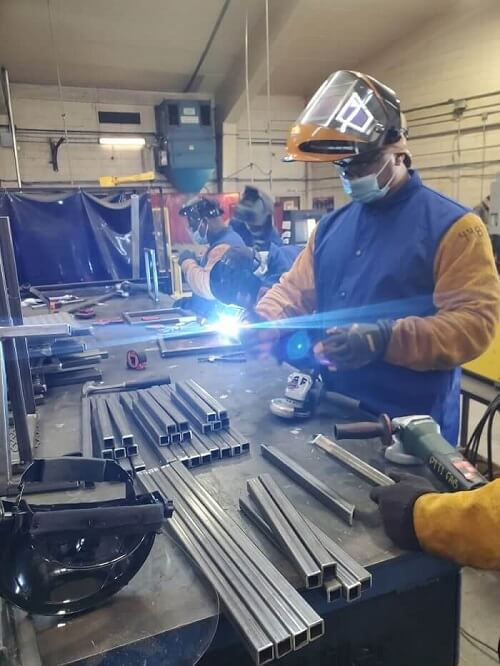Welding, the skillful process of joining metals, has been instrumental in shaping modern society. Welding plays a vital role in various industries, from constructing towering skyscrapers to fabricating intricate machinery. Aspiring welders embark on a captivating journey to master the art of welding through welder training and exposure to various types of welding techniques. In this blog, we will explore the most common types of welding, each with its unique characteristics and applications.
Arc welding is one of the oldest and most widely used welding processes. During welding classes, apprentices learn to create an electric arc between an electrode and the workpiece, causing the metals to melt and fuse as they cool down. Shielded Metal Arc Welding (SMAW), commonly known as stick welding, is a popular variant of arc welding. SMAW is versatile and can be used on various metals, making it suitable for construction, fabrication, and repair applications.
MIG welding, also known as Gas Metal Arc Welding (GMAW), uses a continuous solid wire electrode that is fed through a welding gun. Simultaneously, a shielding gas, typically argon or a mixture of argon and carbon dioxide, is used to protect the weld from atmospheric contamination. It is easy to learn and offers high productivity, making it a preferred choice for automotive, manufacturing, and construction industries.
TIG welding, or Gas Tungsten Arc Welding (GTAW), employs a non-consumable tungsten electrode to create the arc. A separate filler rod is used to add material to the weld joint. This welding work requires precise and aesthetically pleasing welds, making it ideal for applications in aerospace, artwork, and high-quality fabrications.

Flux-Cored Arc Welding is similar to MIG welding, but a tubular wire filled with flux is used instead of a solid wire. The flux provides a shielding gas when it decomposes during welding, protecting the weld from contaminants. FCAW is commonly used in heavy equipment manufacturing, shipbuilding, and outdoor construction because it performs well in windy conditions.
Submerged Arc Welding is a highly efficient process used in high-volume welding work. The weld arc is completely submerged under a flux layer, shielding the weld from atmospheric contamination. Due to its high deposition rates and deep penetration, SAW is commonly used to construct pressure vessels, pipes, and significant structural components.
Resistance welding relies on the principle of electrical resistance to create welds. It involves applying pressure and passing an electric current through the metals to be joined, generating heat at the interface and forming the bond. Spot welding and seam welding are two common types of resistance welding that apprentices learn during their welding training. They are widely used in the automotive industry for joining sheet metal components.
Laser welding is a precise and highly focused welding method that uses a laser beam to melt and join metals. To learn laser welding, apprentices must practice consistently during their welding classes. This process is commonly used in industries where precision and minimal heat-affected zones are crucial, such as electronics, medical devices, and jewelry making.
Each type of welding offers unique advantages, making them suitable for specific applications across various industries. Welders training and hands-on experience with these techniques enable aspiring welders to refine their skills, opening doors to a rewarding and fulfilling career in the world of welding. Whether you’re constructing structures, fabricating machinery, or creating artistic masterpieces, mastering the art of welding will empower you to leave a lasting mark on the world.
Read More: